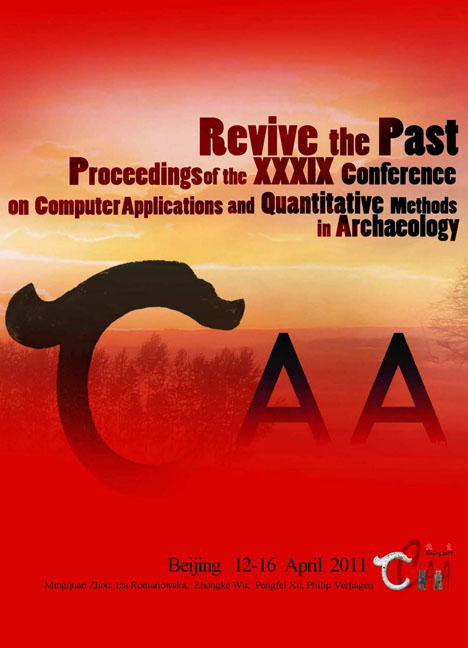 Revive the Past
Revive the Past A Remote Interactive Exhibition Method
Published online by Cambridge University Press: 23 June 2021
Summary
Abstract:
This paper presents a remote interactive exhibition method, which provides users with a way to visit remote high-resolution exhibitions of real artefacts. During the visit, users can control exposure, rotation and zooming parameters of a camera to adjust display conditions. Our method avoids complex modelling or scanning tasks and has no limitation on view angles. The method has been applied in the “University Digital Museum - IPv6 upgrade Project” which funded by the MOE (Ministry of Education) of China.
Keywords: Remote Exhibition, Digital Museum, Interactive Exhibition
Introduction
Characteristics (e.g. shapes, surface materials) of artefacts contain a great deal of valuable information for archaeology and art research. But real artefacts cannot be imitated or moved easily, which is inconvenient to archaeologists and artists. Therefore, it is useful to set up a remote exhibition for them. How to present artefacts remotely and interactively becomes an important issue. Nowadays, a variety of effective methods can be used to make remote exhibitions.
A 3D model-based method renders the virtual artefacts based on a 3D model, which requires 3D scanning and 3D modelling. The method can be divided into 2 types that are local rendering and remote rendering. Using the local rendering method, we download models from the server, and then render them locally. To reduce the requirements on the computing capability of the local machine, we should usually downsample models to a lower precision, which is inadequate for high precision applications. Using the remote rendering method, our client reports the information to the server; the server renders and then returns the results. In order to provide an efficient service to exhibitions, such a method typically requires powerful rendering servers. Abate et al. (2011) present the whole pipeline from the creation of a high resolution 3D model of an “Acquasantiera” to its remote rendering on the World Wide Web. The project consists of 4 high performance workstations which are very expensive. Koller et al. (2004) introduces a remote rendering system in the Digital Michelangelo Project, which have been installed by 4000 users in several months. The project was accomplished by more than 30 faculty, staff, and students in 2 years since the modelling is so complex. Such methods cannot easily be adopted in most museums due to the high price of hardware and the lack of professional IT staff.
- Type
- Chapter
- Information
- Revive the PastProceedings of the 39th Conference of Computer Applications and Quantitative Methods in Archaeology, pp. 164 - 169Publisher: Amsterdam University PressPrint publication year: 2012
